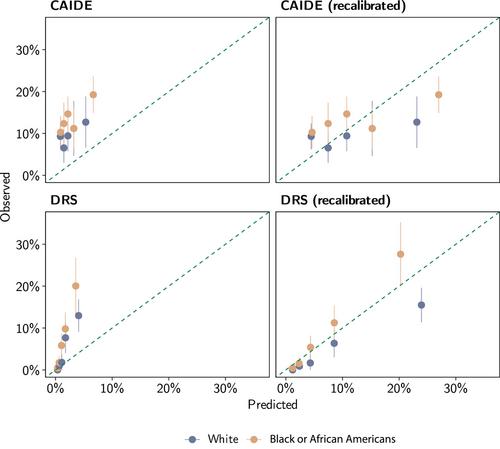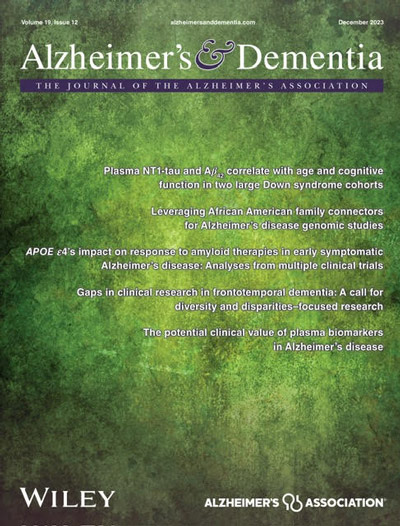External validation of dementia prediction models in Black or African American and White older adults: A longitudinal population-based study in the United States
Abstract
INTRODUCTION
Identifying people at high risk of Alzheimer's disease (AD) dementia allows for timely intervention, which, if successful, will result in preventing or delaying the onset of the disease.
METHODS
Utilizing data from the Chicago Health and Aging Project (CHAP; n = 2130), we externally evaluated four risk-prediction models for AD dementia, including Cardiovascular Risk Factors, Aging, and Dementia (CAIDE), Australian National University Alzheimer's Disease Risk Index (ANU-ADRI), Brief Dementia Screening Indicator (BDSI), and Dementia Risk Score (DRS), in Black or African American and White adults.
RESULTS
BDSI had the highest discriminate abilities for AD dementia (c-statistics of 0.79 in Black and 0.77 in White adults), followed by ANU-ADRI, within the age range and follow-up period of the original development cohort. CAIDE had the lowest discriminating power (c-statistic ≤0.55). With increasing follow-up periods (i.e., 10–15 years), the discrimination abilities for all models declined.
DISCUSSION
Because of racial disparities in AD dementia and longer preclinical and prodromal stages of disease development, race-specific models are needed to predict AD risk over 10 years.
Highlights
- Utilizing risk-prediction models to identify individuals at higher risk of Alzheimer's disease (AD) dementia could benefit clinicians, patients, and policymakers. Clinicians could enroll high-risk individuals in clinical trials to test new risk-modifiable treatments or initiate lifestyle modifications, which, if successful, would slow cognitive decline and delay the onset of the disease.
- Current risk-prediction models had good discriminative power during the first 6 years of follow-up but decreased with longer follow-up time.
- Acknowledging the longer preclinical phase of AD dementia development and racial differences in dementia risk, there is a need to develop race-specific risk-prediction models that can predict 10 or 20 years of risk for AD and related dementias.


 求助内容:
求助内容: 应助结果提醒方式:
应助结果提醒方式:


